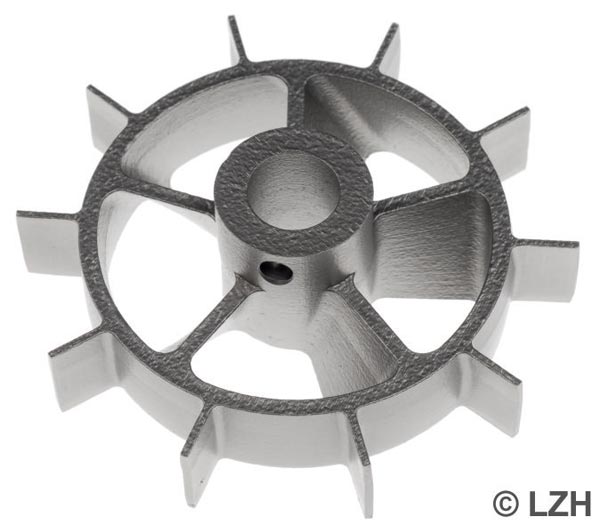LZH presents additive manufacturing at the LABVOLUTION

The lab of the future: Stainless steel stirrer made using 3-D laser printing. Photo: LZH
Twelve partners from science and industry are presenting an intelligent and innovative model lab at the special display smartLAB. A part of this intelligent lab are flexible and quickly adaptable experimental setups.
This is made possible by using lab materials which are suitable for additive manufacturing. As an example, in the model lab smartLAB the LZH is showing a stirrer made using laser additive manufacturing. The stirrer combines two stirrer geometries, and is made of completely molten stainless steel, making it both bioinert and stable.
A short step from the idea to the finished product
„Laser additive production is excellent for manufacturing stable, individual components made of metal,“ says Yvonne Wessarges, scientist in the Surface Technology Group at the LZH. “It is just a short step from the idea to the finished product. Accordingly, this process is great for trying out new approaches.”
Individual, intelligent implants
At the LZH, this process is being used, among other things, for the development of intelligent implants. The scientists are working on actuators made of shape memory alloys for use in cochlea implants. These should help the surgeon to insert the implant by self-adapting their shape.
Another research area is the temporary replacement of bones. Patient-specific implants made of magnesium should firstly help support the tissue, and also serve as a sort of scaffolding for the bone cells. During the healing process, the implant slowly dissolves, making a second operation unnecessary.
Media Contact
All latest news from the category: Trade Fair News
Newest articles

Parallel Paths: Understanding Malaria Resistance in Chimpanzees and Humans
The closest relatives of humans adapt genetically to habitats and infections Survival of the Fittest: Genetic Adaptations Uncovered in Chimpanzees Görlitz, 10.01.2025. Chimpanzees have genetic adaptations that help them survive…

You are What You Eat—Stanford Study Links Fiber to Anti-Cancer Gene Modulation
The Fiber Gap: A Growing Concern in American Diets Fiber is well known to be an important part of a healthy diet, yet less than 10% of Americans eat the minimum recommended…

Trust Your Gut—RNA-Protein Discovery for Better Immunity
HIRI researchers uncover control mechanisms of polysaccharide utilization in Bacteroides thetaiotaomicron. Researchers at the Helmholtz Institute for RNA-based Infection Research (HIRI) and the Julius-Maximilians-Universität (JMU) in Würzburg have identified a…



